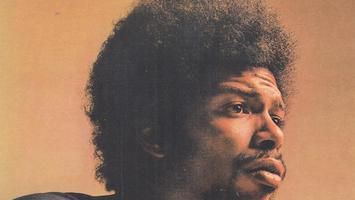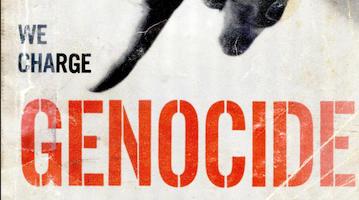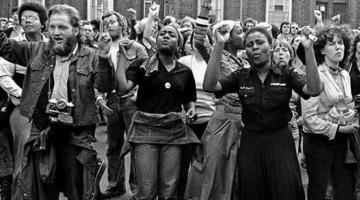Hamilton has sent white people with emotional investments in not being racist over-the-moon.
“Miranda’s portrait of multicultural democracy is vaudevillian and grotesque.”
“The whole idea of a stereotype is to simplify.” — Chinua Achebe
Scenes from Hamilton’s multiracial America
We are an interracial wife-husband union (she black, he white) raising two black daughters, and we have stewed with each other in frustration for the past few years about the love affair in certain parts of U.S. society with the hit Broadway show Hamilton. Our youngest daughter loves musical theater and has been singing the songs to Hamilton since the soundtrack was released in 2016. When Disney Plus released a filmed version of the show on its new streaming platform on July 3, 2020, our family was able to see the musical for the first time. Variety reports that downloads of the Disney Plus app jumped 74 percent in the U.S. and 46 percent globally over the July 3-5 weekend, showing how instrumental the Hamilton brand is to Disney’s business plan. Disney CEO Bob Chapekconfirmed the show’s impact on the company when he stated, “That particular audience was very important for Disney Plus because it represented a tangent of an audience that we don’t necessarily get that often on Disney Plus.” Although people are free to like what they like, and of course we will always support our daughter’s interests, this enormous platform for Hamilton’s gross racial minstrelsy is one example of the litany of challenges facing parents of black children two decades into the twenty-first century.
“The Hamilton brand is instrumental to Disney’s business plan.”
For some of us moving through white America, Hamilton is like a bad Rorschach test. Deborah was recently at a gathering at a neighbor’s house where the soundtrack to Hamilton played so loudly that she could hardly hear him speaking. Who or what is this, she asked, as the neighbor’s grin grew ever wider. Deborah wondered: Is he signifying? This good-natured man is showing me with his toothy grin that Hamilton’s version of hip hop can play in his house, and loudly to boot, because…well, all black people like loud hip hop music, and he was proudly welcoming me and my music into his home. He was thrilled to blow a sub-woofer on this Hamilton joint. He asked if I’d heard the music. “No,” I said, and then I told him, “and that’s not hip hop.” His smile disappeared and we moved into the kitchen for more wine and better company than one another.
You never know when Hamilton will rear its head among white folks. When we met with the director of our daughter’s school, a copy of Hamilton: A Revolution, by Lin-Manuel Miranda and Jeremy McCarter, the libretto and backstory to the show, was prominently displayed on the coffee table in his office. The director extolled the virtues of the school, emphasizing in particular its commitment to diversity. At one point in the meeting, seemingly out of the blue, the director leaned forward, pushed the book towards us, and told us how much he loves Hamilton. As it happens, this gesture of identification and desire by the school director, non-sequitur aside, has become commonplace: Hamilton has sent white people with emotional investments in not being racist over-the-moon. They trip over themselves telling each other and their non-white friends how they have memorized the soundtrack. They seem to feel that giving Hamilton as housewarming or holiday gifts, or showing it off to the parents of a black child in the school for which they serve as director, authenticates their commitment to diversity, verifies their anti-racism credentials. These are the “good” whites. Given that Hamiltonadds black and brown faces to a national mythology without altering that narrative in any substantive manner, this possessive and performative frenzy is telling. Miranda, Hamilton’s creator and star, and his crew portray the most prominent slaveholders and slave traders of the white nation’s Founding Generation beatboxing and rapping—the counter-revolutionaries against black freedom in a strange type of blackface. The mystification aims to have it both ways: condemn slavery as evil and then resurrect the people who perpetrated it as “self-made” men and the social structures based on it as multicultural and inclusive, minus the chattel condition. Slave traders with soul!
State minstrelsy
When the George H. W. Bush Administration nominated Judge Clarence Thomas to replace the first black Supreme Court Justice and civil rights icon Thurgood Marshall, and subsequently succeeded in casting Thomas as the victim of a racist character attack by means of Anita Hill’s sexual harassment allegations against him, Wahneema Lubiano termed Thomas’ confirmation hearings as "state minstrelsy." State power, explained Lubiano, preserved itself most effectively by covering itself in Thomas’ narrative of black striving and endangered masculinity. Blackface minstrelsy was always state minstrelsy, however, in that it buttressed slavery by portraying black people as content with their lot as slaves, and then after the Civil War, as a means of justifying lynching and Jim Crow segregation. Before and after Emancipation, antiblackness has been central to the mystified story of power that Americans readily consume and hold dear. Marlon Riggs’ classic 1987 documentary film Ethnic Notions showed that whites who performed and consumed blackface minstrelsy were enthralled with their caricatured fantasies of blackness and sought to “release themselves as blacks…there was a kind of catharsis about this. [B]lacks have played that role in this society, they have been a kind of surrogate” (emphasis added). What kind of state power, then, does Hamilton advance? What kind of release occurs, and for whom, when people of color perform white nationalist fantasies on stage? What kind of surrogacy is at work here?
Cultural appropriation, still
Blackface minstrelsy is one of the earliest and most enduring forms of cultural appropriation. In today’s “post-racial,” post-civil rights era, multicultural ambassadors like those in the Hamilton production appropriate black culture to try to remind us of how far we have come. But “progress” in this instance is not simply a cynical add-color-and-mix quotient, it is part of a larger masquerade of power. Ishmael Reed, taking up the drum major’s instinct across five important CounterPunch articles going back to 2015, has shown that Miranda’s portrait of multicultural democracy is vaudevillian and grotesque. History is not some smorgasbord where you can take the slaveholder, but leave out the white man; add black and brown faces, but swap out the enslaved Africans and the indigenous people; and then pretend as though we have something new to digest. Something sweeter. Something that smooths over pillage, silences rape, and sanitizes power.
A select group of women historians have responded by showing how preposterous Hamilton is as history. Nancy Isenberg notes that Miranda’s emphasis on Hamilton’s immigrant status flaunts the nativist politics of Hamilton’s own Federalist Party, among other historical contortions. Michelle DuRoss rejects Miranda’s portrayal of Hamilton as an abolitionist. She writes, “If Hamilton hated the slave system in the West Indies, it might have been because he was not a part of it. He grew up surrounded by wealthy white families, while his remained impoverished.” Hamilton sought wealth and power, foremost, and that meant he was a lifelong servant of slaveholding class interests, regardless of whether or not he personally practiced human bondage. Lyra Monteiro concludes her critique of how Miranda’s race-conscious casting covers up Hamilton’s utter exclusion of black historical figures with this question: “Is this the history that we most want black and brown youth to connect with—one in which black lives so clearly do not matter?”
“Hamilton was a lifelong servant of slaveholding class interests.”
Reed, for his part, is more direct when he proclaims that
“[Hamilton] is the best argument I know for the establishment of more Afro-Centric schools and Hispanic schools in order to balance the curriculum promoted by Euro-Centric schools, in which perpetrators of genocide and slave holders are honored. Was school integration a mistake? Were these the brainwashing schools attended by the Latino and Black actors who are performing in this thing?”
Reed offers an even more robust reply to Hamilton with a play of his own, The Haunting of Lin-Manuel Miranda, which debuted at the Nuyorican Poet’s Café in Manhattan in 2019. Critics of Haunting appreciated Reed’s effort to correct the historical record, but bemoaned the play as didactic and boring. It reminds us that when black artists refrain from song and dance, or when they take the long view of slavery, we see how fragile American historical sensibilities truly are. Regarding the film version of Toni Morrison’s Beloved, for instance, the Washington Post’s Stephen Hunter complained that the film is “powerful, depressing, and very long. At close to three hours, it virtually enslaves an audience.” By comparison, the filmed version of Hamilton on Disney Plus is only 12 minutes shorter than Beloved. Having Hamilton represent the real world that slaveholding built is akin to having Officer Friendly stand in for the brutal social control apparatus of domestic policing.
Aesthetics of pimpin’
The fact that Miranda is pimping black culture in order to sell this white nationalist propaganda is outrageous, but it places him squarely within the long blackface minstrel tradition. Minstrelsy has always been enormously profitable for its purveyors: Hamilton has become a billion-dollar franchise, making Miranda a very wealthy man. Have we forgotten the firestorm that followed hip hop’s emergence in the early 1980s, the vociferous backlash and censorship campaigns levied against Public Enemy and NWA and numerous other rap groups? The beleaguering of hip hop was a response to its cultural content and historical consciousness, not to mention the fact that it was the latest black art form to captivate white youth (following ragtime, jazz, blues, and rock-n-roll). That is what instilled it with the promise of revolution—not simply that black people created and performed it. The simple facts that the cast is mostly non-white, that it raps, and that Miranda samples the hip hop archive do not make Hamilton hip hop. Daveed Diggs, who plays Thomas Jefferson in the original production, claims that “I walked out of the show with a sense of ownership over American history. Part of it is seeing brown bodies play these people.’’ Diggs affects an exaggerated swagger throughout his portrayal of one of the leading rapists of the Founding slaveholding class, making it unclear if he is mocking Jefferson, himself, or black culture more generally. Diggs’ notion that black and brown people are now included in the nation’s origin story parrots Miranda’s oft-quoted pitch for the show: ‘‘This is the story of America then, told by America now.’’ The reality is that by the mid-eighteenth century, Britain was moving towards abolition because black rebellion throughout its slaveholding territories had made slavery too costly. The American slaveholding class was heavily indebted to London creditors, however, and stood to lose all of their wealth and power if slavery was abolished. For this reason, Gerald Horneargues that the colonists are more accurately remembered as counter-revolutionaries against black freedom. Contrary to what Diggs and the Hamilton discourse purports, therefore, black self-determination is the inexorable force against which Hamilton and his class were constantly fighting. By trading in this actual historical fact of black power in favor of white power in blackface, Hamilton is a classic instance of counter-revolutionary culture.
In the room…with a dragon?
Hamilton reminds us that non-black people of color, as well as some upwardly mobile black folk, are not necessarily down for what black liberation requires. One of the more insidious messages from the show is “the room where it happens.” Initially a song about backroom politicking between Hamilton, Jefferson, and Madison, it becomes a refrain throughout the arc of the show for assimilation into a system of elite power brokers. Miranda clearly identifies with Founder's Chic, the strategy by which the founding generation is represented as relatable, everyday guys who rise to extraordinary heights through pluck, integrity, hard work, and genius. He combines this mythology with that of the American immigrant to enjoin the nationalist narrative about, as Miranda puts it, “the more perfect union we’re always working towards.” The message is that you have to enter the room where the decisions are made in order to make a positive contribution to society. In the context of a country founded on slaveholding and indigenous genocide, in which slaveholding culture persists in the post-civil rights era despite no one being legally held as property, and where blackness continues to serve as surrogate for what it means to be human, genocidal violence is intrinsic to the room itself. This message about being in the room therefore reproduces the status quo; it does not advance progressive change. It also shows that the color line becomes considerably more fluid when those in the room regard black power as effectively quarantined. It says that the only way for change to happen is to work from within a system that effectively bars the overwhelming majority of black folks from such rooms, great and small, all across this country.
In the room where it happens you find a diversity of perspectives, leading to real differences of opinion over policy, as when the Hamilton cast spoke out against the Trump administration from the stage when Vice President Pence attended a performance in New York. The current administration and the Left-liberal continuum that would oppose it, however, are each equally committed to the structure within which this proverbial room exists. This structure rewards a select few with access to the room at the cost of raw violence and great desperation for many others. This trade-off is seductive. As Jeremy Gordon writes of Miranda,
“It may take a systematically flawed country to elevate something like Hamilton into a global smash, but it takes only a single, blinkered narcissist to decide this is the story he wants to tell, and to not deviate once the money starts rolling in. Should he not want to publicly repudiate the more objectionable myths his play has perpetuated, Miranda might want to stay the course…He could write a similar play about Columbus, which would surely be a smash.”
For this reason, George Jackson, quoting Ho Chi Minh, held that when the prison doors open, the real dragon will fly out—meaning that the black revolutionary holds the key to genuine social change. But Joy James soberly reminds us that even most people on the Left do not want to live next door to a dragon, or to have one in their co-op, or to educate their kids alongside one. Hamilton sells a more comforting but dangerous roux of black and brown systemic buy-in and achievement. No thanks.
Deborah L. Bowen is the owner of D’Wellness Life Coaching. Trained in techniques of spiritual guidance, she supports clients’ success through timeless womanist leadership strategies. She writes about race politics, sisterhood, art, and ancestral ties. She can be contacted at dloycedwellness@gmail.com.
Tryon P. Woods teaches crime and justice studies at the University of Massachusetts, Dartmouth and black studies at Providence College. His writings can be found at his website.
COMMENTS?
Please join the conversation on Black Agenda Report's Facebook page at http://facebook.com/blackagendareport
Or, you can comment by emailing us at comments@blackagendareport.com



















